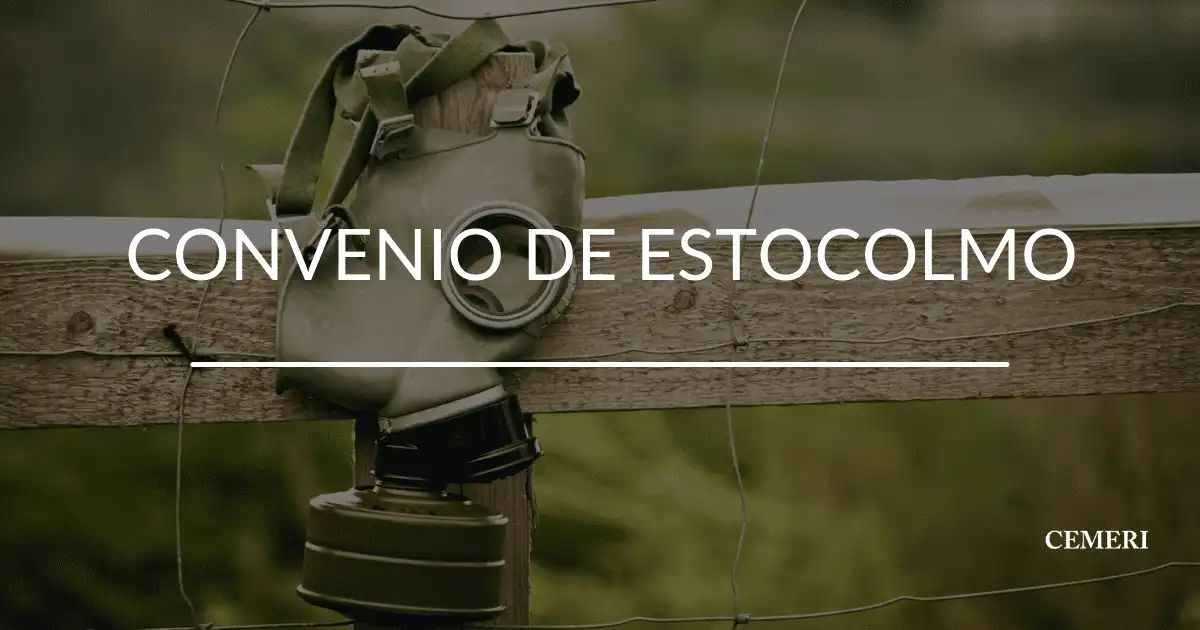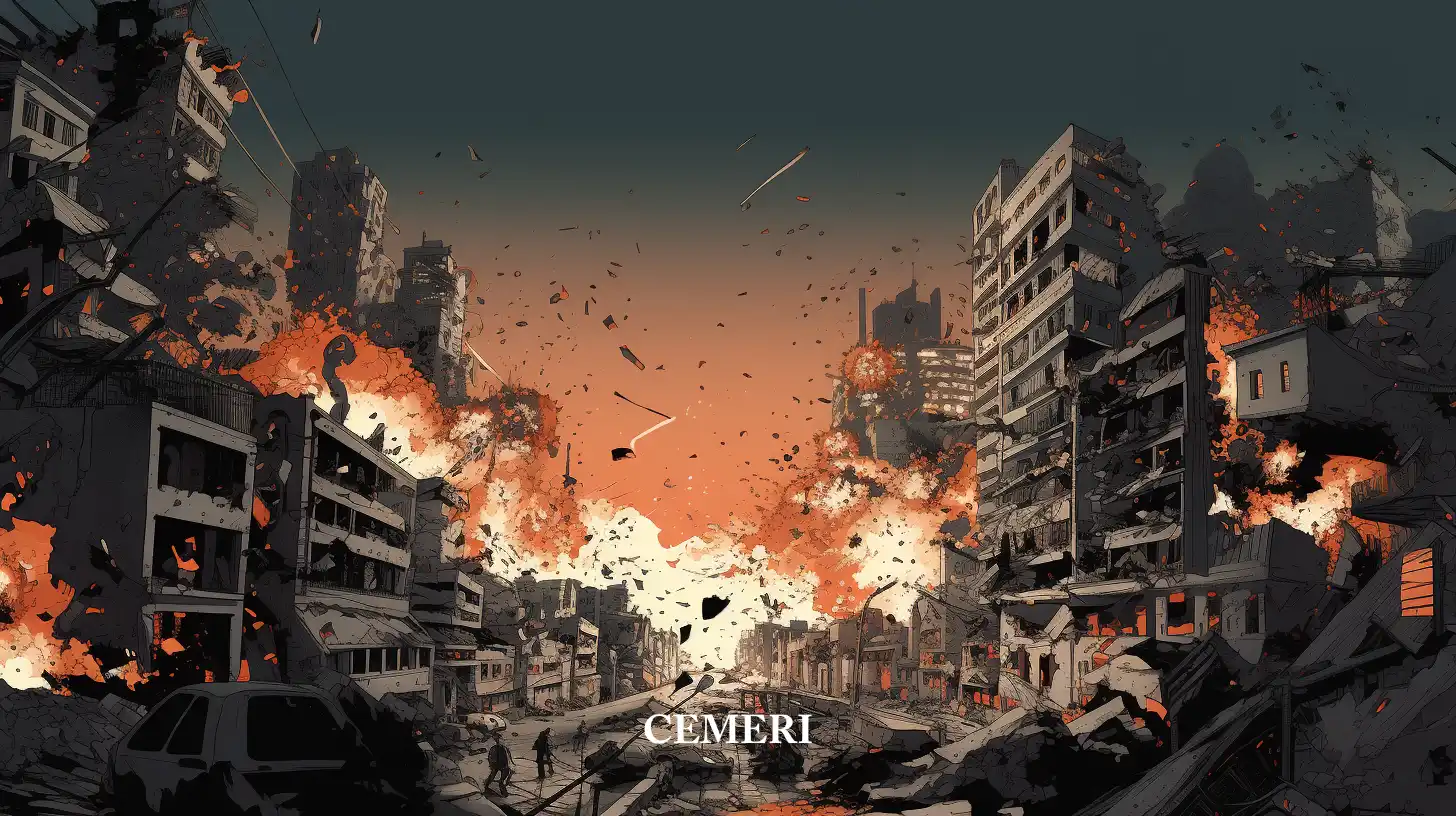Encyclopedia
Marco Antonio Olivera Eslava
What is the Stockholm Convention?
- The Stockholm Convention or Protocol is a global treaty that aims to protect human health and the environment from the effects of persistent organic pollutants (POPs).

The Stockholm Convention or Protocol on Persistent Organic Pollutants is a global treaty that aims to protect human health and the environment from the effects of persistent organic pollutants (POPs).
By implementing the Convention, governments have taken steps to eliminate or reduce the release of POPs into the environment. Negotiations for the treaty ended on May 23, 2001, and more than 152 countries ratified the Convention and, to carry out its implementation, it entered into force on May 17, 2004. The Convention is administered by the United Nations Program Organization for the Environment (UNEP) and is based in Geneva, Switzerland.
What are the objectives of the Stockholm Convention?
The Stockholm Protocol can best be understood by its five essential objectives:
- Eliminate dangerous POPs, starting with ''The Dirty Dozen''
- Support the transition to safer alternatives
- Target additional COPs for action
- Cleaning of stocks and old equipment containing POPs
- Work together for a future free of POPs
Persistent Organic Pollutants pose a major threat to global health.
What are some characteristics of persistent organic pollutants (POPs)?
- They're toxic.
- They have the potential to accumulate in amounts that are harmful to health in humans and animals.
- They are stable and, therefore, resistant to natural degradation.
- They can be transported over long distances through the atmosphere and oceans.
- POPs have been shown to negatively affect human health and the environment. They have been linked to cancer, nervous system damage, reproductive disorders, and a weakened immune system.
POPs are chemicals that remain intact in the environment for long periods, are widely distributed geographically, accumulate in the fatty tissue of living organisms, and are toxic to humans and wildlife. POPs circulate throughout the world and can cause harm wherever they travel.
Initially, the Convention identified 12 chemicals as "The Dirty Dozen" divided into three categories:
- Pesticides: Aldrin, chlordane, DDT, dieldrin, endrin, heptachlor, mirex, and toxaphene.
- Industrial chemicals and compounds: Hexachlorobenzene (HCB) and polychlorinated biphenyls (PCB).
- By-products resulting from combustion processes: Dioxins and furans.
To date, 29 COP are regulated and are listed in annexes A, B and C of the agreement. They are classified by annex according to the action that must be carried out with respect to the chemical:
- Annex A: Elimination.
- Annex B: Restriction.
- Annex C: Unintentional production.
‘‘The Dirty Dozen’’
| Annex | POPs | Usage |
|---|---|---|
| Elimination | Aldrin and dieldrin | Pesticides used on crops such as corn and cotton; It is also used for termite control. |
| Elimination | Chlordina (Chlordane) | Pesticide used on crops including vegetables, small grains, potatoes, sugar cane, sugar beets, fruits, nuts, citrus, and cotton. It is used on home lawns and garden pests. It is also widely used to control termites. |
| Elimination | DDT | Pesticide used on agricultural crops, mainly cotton, and insects that carry diseases such as malaria and typhus. |
| Elimination | Endrin | Pesticide used on crops such as cotton and cereals; It is also used to control rodents. |
| Elimination | mirex | Pesticide used to combat fire ants, termites and mealybugs. It is also used as a fire retardant in plastics, rubber, and electrical products |
| Elimination | Heptachlor | Pesticide used mainly against soil insects and termites. It is also used against some pests, including those of crops, and to combat malaria. |
| Elimination | Hexachlorobenzene (perchlorobenzene) | Pesticide used for seed treatment. It is also an industrial chemical used to make fireworks, ammunition, synthetic rubber, and other substances. It is also produced unintentionally during the combustion and manufacture of certain chemicals. |
| Elimination | PCBs | It is used for a variety of industrial processes and purposes, such as electrical transformers and capacitors, color exchangers, paint additives, carbonless paper, and plastics. |
| Elimination | Toxaphene | Pesticide used to control pests on crops and livestock, and to kill unwanted fish in lakes. |
| Unintentional production | Dioxins and furans | It is produced unintentionally during most forms of combustion, including burning medical and municipal waste, burning backyard garbage, and industrial processes. They can also be found as trace contaminants in certain herbicides, wood preservatives, and in PCB mixes. |
How does the Stockholm Convention work?
The Convention establishes that the parties adopt a series of control measures to reduce and, when feasible, eliminate the release of POPs. For Intentionally produced POPs, parties must prohibit or restrict their development, production and use, subject to certain exemptions, such as the continued use of DDT, as well as the use of products made with POPs. The Stockholm Convention also requires that they carry out best practices for the eradication of use such as the restriction of trade in such substances.
For unintentionally produced POPs, the obligations to which countries are subject is to develop national action plans to address releases and apply “best available environmental techniques” to control them.
The Stockholm Protocol also aims to ensure proper management of stocks and wastes containing POPs.
DDT is one of the main pesticides prohibited by the Stockholm Convention.
It should be noted that, at the international and national level, the Stockholm Convention focuses on the elimination or reduction of POPs emissions. Establishes a system to address additional chemicals identified as unacceptably hazardous. Ultimately, the Convention points the way to a future free of hazardous persistent organic pollutants and promises to reform the global economy's reliance on toxic chemicals.
Sources
SIN FUENTES

